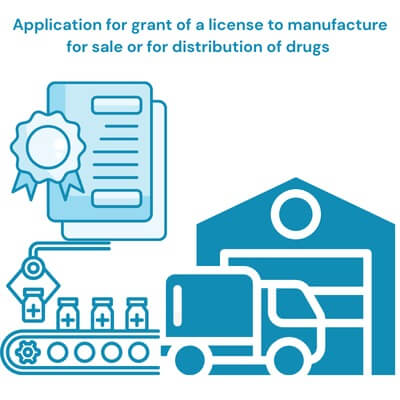
The manufacture of pharmaceuticals in India is governed by a robust regulatory framework designed to ensure the safety, efficacy, and quality of drugs available in the market. Among the various regulatory pathways, obtaining a manufacturing license for drugs listed under Schedules C and C(1)—excluding those specified in Part XB and Schedule X—is critical for manufacturers dealing with biologicals and sterile products.
This blog presents a comprehensive overview of the legal provisions, procedural requirements, documentation, and compliance obligations involved in the grant of such a license under the Drugs and Cosmetics Act, 1940, and Rules, 1945.
Schedules C and C (1) pertain to a special category of drugs that require stringent manufacturing controls due to their sensitive nature and direct application routes (e.g., injections, ophthalmic use, etc.).
Schedule C includes:
Schedule C (1) includes:
Excluded Categories:
Entities eligible to apply for this manufacturing license must meet the following regulatory and operational prerequisites:
• Legal Status: The applicant must be a registered business entity in India (proprietorship, partnership, LLP, or private/public Company).
• Infrastructure: The premises must be appropriately designed, equipped, and maintained as per GMP norms for sterile and biological manufacturing. Cleanroom classifications and air handling systems are critical.
• Technical Manpower: Employment of technically qualified personnel such as:
a) Competent Technical Staff (B. Pharm/M. Pharm with experience)
b) Qualified Manufacturing Chemists
c) Quality Control and Quality Assurance professionals
• Quality Systems: Comprehensive SOPs, in-process checks, documentation systems, and validated processes must be in place.
Step 1: Preparation and Compliance Readiness
Step 2: Submission of Application
Step 3: Documentation Checklist
The application must be supported by:
Step 4: Inspection and Verification
A joint inspection is conducted by Drug Inspectors from the State and/or Central Licensing Authorities to assess:
Step 5: Issuance of License
Upon satisfactory inspection and document verification, the Manufacturing License is granted in Form 28, authorizing the applicant to manufacture and sell/distribute the approved formulations.
After obtaining the manufacturing license, the licensee must continuously comply with:
Obtaining a license to manufacture drugs under Schedules C and C (1) is a technically and legally intensive process, reflecting the sensitivity and complexity of these pharmaceutical products. It is vital for applicants to adopt a meticulous approach—right from infrastructure planning to documentation, and from technical staffing to GMP implementation.
The authorities emphasize quality-by-design, documentation integrity, and patient safety, making it essential for manufacturers to integrate regulatory compliance into every stage of production and quality assurance.
Engaging with regulatory consultants, validation experts, and GMP auditors can significantly streamline the application and post-license compliance journey, ensuring sustained market access and regulatory trust.
For more details, please click HERE





We are the pioneers in offering environmental consulting services to our patrons, giving us the first mover advantage & keeping us ahead of our competitors.
Very experienced in filing, monitoring & submission of CDSCO Compliances, Drugs Manufacturing & sale guidelines, Environmental Impact Assessment, AERB consulting services, Pollution Control Board CTE & CTO Advisory Services, Waste Management Authorization from State Pollution Control Boards, Fertilizers & Insecticides Manufacturing, Wholesale & Import Compliances
